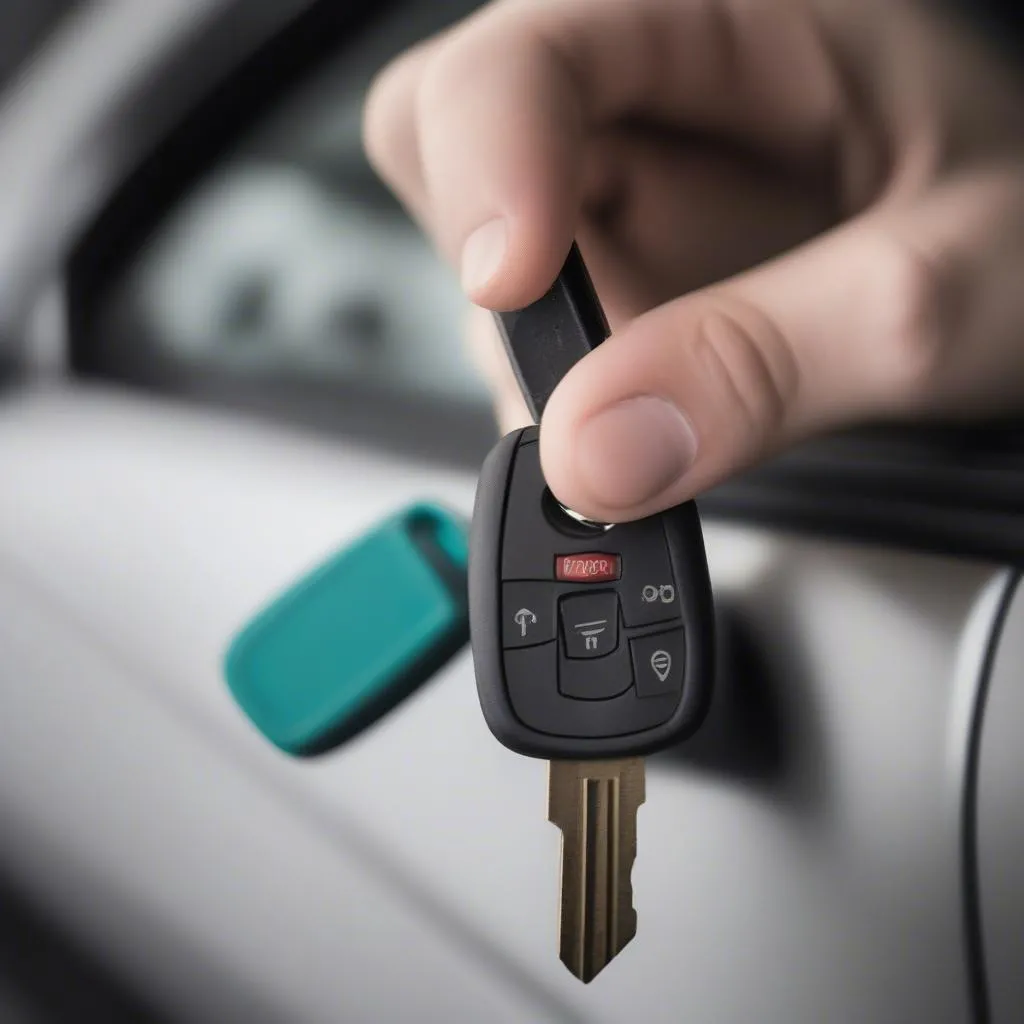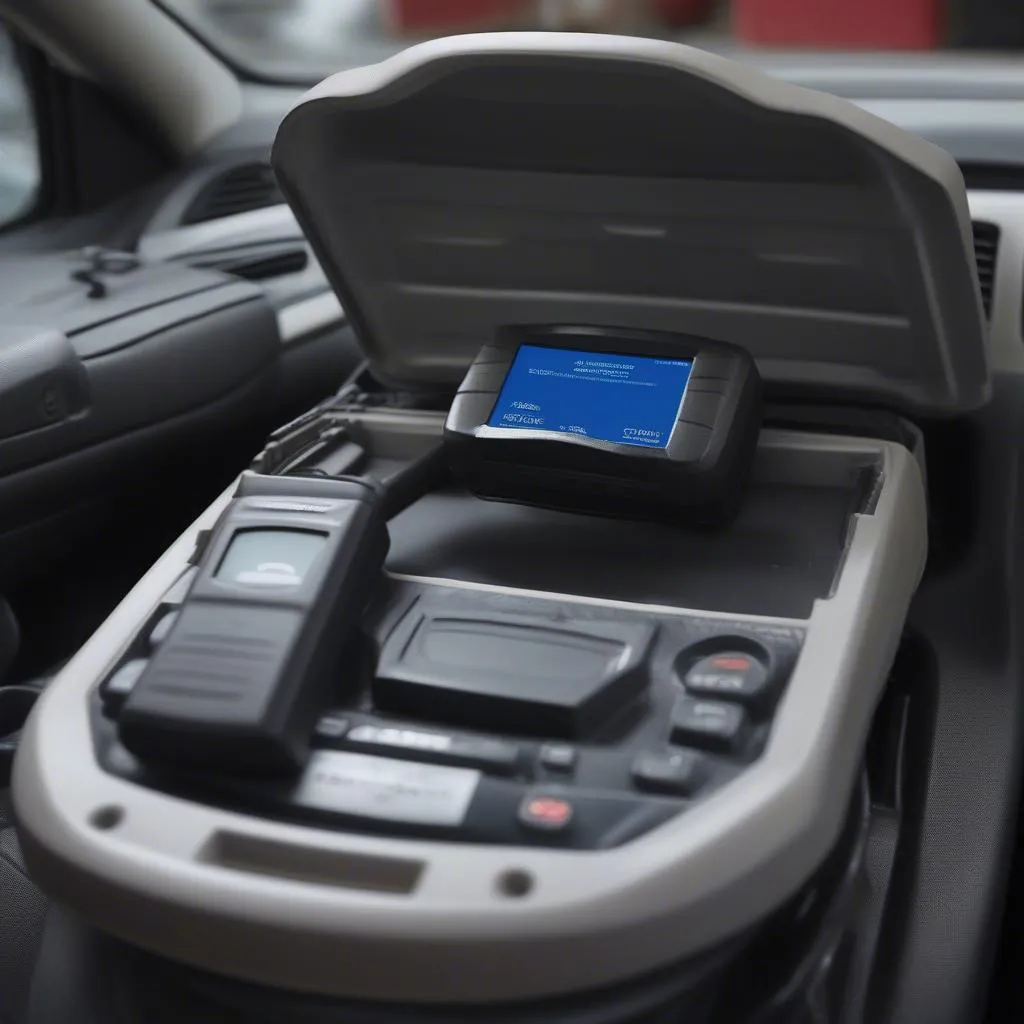Experiencing issues with your Ford’s anti-theft system? You’re not alone. This problem is a common headache for Ford owners, often leading to frustrating vehicle starting problems. While bypassing your car’s security features might seem tempting, it’s crucial to understand the intricacies of the system and prioritize safe and legal solutions.
This guide explores the complexities of the Ford anti-theft transceiver system, helps you identify potential issues, and directs you towards reliable solutions.
Understanding the Ford Anti-Theft System
Your Ford vehicle is equipped with a Passive Anti-Theft System (PATS) designed to deter theft. The system uses a transceiver, a small electronic device located within the vehicle, to communicate with your key. Each key has a unique identification code. When you insert your key and attempt to start the engine, the transceiver reads the code and, if it matches the vehicle’s stored codes, signals the engine control module (ECM) to allow the vehicle to start.
“Many car owners are unaware of the PATS system’s inner workings until they face starting issues,” says automotive electronics expert, Dr. Susan Miller, author of “Automotive Electronics Simplified.” “Understanding how the system interacts with your key is the first step to successful troubleshooting.”
Common Ford Anti-Theft System Problems and Symptoms
Identifying the root cause of your anti-theft system issue is crucial for an effective resolution. Here are some common symptoms and their potential causes:
- Vehicle Won’t Start and “Theft” Light Blinks Rapidly: This often indicates that the PATS system is not recognizing the key’s code. Potential causes include a malfunctioning transceiver, a faulty key, or a wiring issue.
- Intermittent Starting Issues: Sometimes, the system may work correctly and then fail without warning. This erratic behavior could point to a loose connection, a dying battery in the key, or an intermittent problem within the transceiver or ECM.
- Key Stuck in the Ignition: While less common, the anti-theft system can sometimes cause the key to get stuck in the ignition. This could be due to a faulty ignition cylinder or a problem with the system’s linkage to the steering column lock.
Tools and Equipment for Diagnosing Anti-Theft Issues
Before attempting any repairs, it’s essential to have the right tools on hand:
- Digital Multimeter: This tool helps you test the electrical circuits and components within the anti-theft system, including the transceiver and wiring harnesses.
- Code Reader: A code reader designed for Ford vehicles allows you to read and interpret diagnostic trouble codes stored within the ECM. These codes provide valuable clues about the system’s health and can pinpoint specific areas of concern.
- Cardiagtech Diagnostic Scanner: For comprehensive diagnostics and programming capabilities, consider professional-grade tools like those offered by Cardiagtech. These advanced scanners can access and troubleshoot a wider range of vehicle systems, including the PATS.
 Car Diagnostic Scanner
Car Diagnostic Scanner
Seeking Professional Help and Safe Solutions
While this guide provides a starting point for understanding your Ford’s anti-theft system, remember that attempting to bypass the system or tamper with its components can lead to further damage, void your warranty, and even have legal ramifications.
If you encounter persistent anti-theft system issues, the safest and most reliable solution is to seek the assistance of a qualified automotive locksmith or a certified Ford dealership.
Frequently Asked Questions:
Q: Can a low car battery cause anti-theft system problems?
A: Yes, a weak or dying battery can cause erratic behavior in the anti-theft system, as it might not provide enough power for proper communication between the key, transceiver, and ECM.
Q: My key fob works to unlock the doors, but the car won’t start. Is this an anti-theft issue?
A: It’s possible. While the key fob might unlock the doors, the transponder chip in the key responsible for disarming the immobilizer might be faulty or not communicating correctly with the vehicle.
Q: Can I program a new key myself?
A: Programming new keys for a Ford vehicle equipped with PATS often requires specialized equipment and knowledge. It’s generally recommended to have a dealership or a qualified automotive locksmith handle this procedure.
 Car Key Programming
Car Key Programming
Conclusion
Navigating the intricacies of your Ford’s anti-theft system can be challenging. While troubleshooting basic issues yourself might be possible, always prioritize your vehicle’s safety and seek professional help when needed.
Contact CARDIAGTECH today for information about our professional-grade diagnostic tools and expert services to keep your Ford running smoothly.

